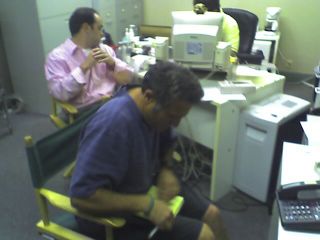A question about taking time off was posed recently.
Question: I am thinking now of starting up my training in a more serious form after I get to Santa Cruz in September (or when I get back here in October). I know that I should take some time off, but I am not sure how much and when. my goal is to train for next season
Answer: Taking time off is one of the trickiest things in cycling. It needs to happen but everyone reacts differently to it. One big mistake is that people take complete time off from the bike as well as physical activity. That's a mistake in my opinion, especially if you're healthy....i.e. if an injury is not forcing you away from activity.
Taking time off is meant to let your little sores and aches heal, get your body to use different muscles, and your mind to refreshen itself. I usually take one big two week break from the bike but substitute the hours away from riding with tennis, hiking, running, yoga, surfing, etc. I also take at least two one week or partial week times off in the middle of the season but totally reduce all activity and let my body heal from things....you'll get to appreciate the need for these little breaks as you age!
No matter what you do, the biggest favor you can do for yourself is to free your mind from any angst of being away from riding when you do take time off. For example, on my recent surf trip to Sinaloa where riding a bike was just not happening, I simply made peace with that fact and enjoyed all the other activities that were available to me. Certainly 4-7 hours of surfing every day did the job nicely, but I also threw in some fast paced walking and canoeing to mix it up. It took me a day and a half to let it all go and while my body recovered from the specific demands of riding, I also let my mind refreshen itself from the demands of "being on" with training and racing.
Coming back home and resuming training was done very gradually and to say I eased into it is an understatement. I always feel a bit awkward getting back on the bike after some time but I know through experience that fitness will come back, form will comeback, strength will come back much better if your time off the bike is one that maintains your fitness while refreshes your mind.
My suggestion is to take 10-14 days from riding certainly to coincide with your trip to Peru where I'm sure you'll do some hiking. But also for when you get back. Your move to and from Chicago has a physiological and psychological cost, even if you think you can just push through. Allow yourself a few days of moderate activity to settle down from the energy you spend moving. Then get into it gradually and with ease.
Your season is a way off and you have loads of time. You don't need to be peaked anytime soon so focus on enjoying your life!




